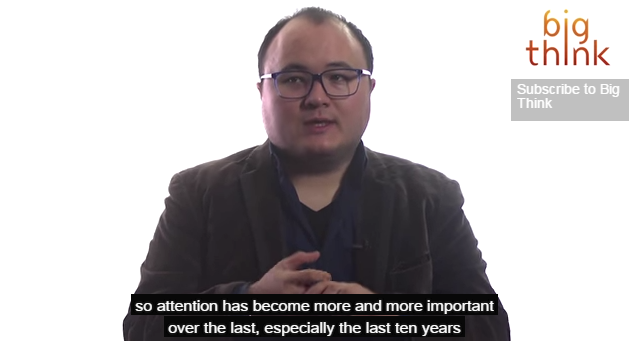The Secret To Capturing People's Attention In The Informational Age, According To Science

In the age of information, companies vie for people’s attention — media corporations like HBO or NBC tailor new TV shows to millennials; tech startups design products and apps that will garner long-term devotion (and investment of money). Everyone wants your attention, and it turns out there’s a specific way to capture it.
In a new video, writer and entrepreneur Ben Parr, the author of Captivology: The Science of Capturing People’s Attention, explains the best way to capture an audience’s attention.
“Attention comes in many forms, which is part of the reason I studied it so much,” Parr says in the video. “There’s the attention for if you turn your head because you hear a gunshot; there’s attention for if you start concentrating on a speaker, and there’s the type of attention that makes people long-term fans of a company like Apple or a celebrity like Beyonce.”
Firstly, there’s immediate attention. This is a subconscious form of attention, like being attracted to bright, shiny objects or flashing lights. Immediate attention is often captured by certain colors, sights, sounds, on a primal level.
Then there’s short attention — which involves your conscious short-term concentration on something, like watching an episode of a TV show or reading an article. Short-term attention often requires novelty, Parr explains, while long-term attention — the devotion to watching an entire series of a show, or reading a book series — requires garnering deep interest and investment.
Thus, capturing attention involves going through these three stages: first, you must interest your audience in a primal, subconscious level, then you must focus them with short-term attention; and finally, you must have your audience become really ingrained with the idea or subject.
As more and more information is created, and more companies try to steal your attention however, the question is: What will you allow to capture your attention?
Published by Medicaldaily.com



























